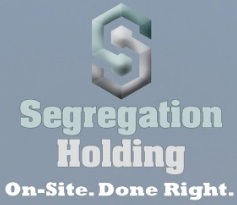U.S. Congress passes the American Taxpayer Relief Act of 2012 at 11th hour…
In the 59th minute of the 11th hour on January 1, 2013, congress passed the American Taxpayer Relief Act of 2012 (a.k.a. H.R.8) to avoid automatic increases in federal income taxes for millions of Americans…and the additional cuts to the federal government that was feared by many would plunge the nation’s economy into a deeper recession than before.
Thankfully, due to legislative compromise, two tax credits applicable to energy-efficient homes that expired on December 31, 2011 were restored for both business and personal taxpayers. The American Taxpayer Relief Act of 2012 extended these tax credits through December 31, 2013, and made them retroactive so as to provide projects completed in 2012 to benefit as well.
To take advantage of the §45L business tax credit, one would complete IRS Form 8908.
26 U.S.C. §45L Business Tax Credit for New and Renovated Energy Efficient Residences
The American Taxpayer Relief Act of 2012 reinstated and extended the 26 U.S.C. §45L business tax credit of up to $2000 for contractors or developers that construct or significantly renovate “dwelling units” (apartments, condos or single-family homes) that meet certain energy efficiency standards.
Importantly, the credit is calculated based on the “dwelling unit,” not the building. IRS guidance on the credit defines “dwelling unit” as “a single unit providing complete independent living facilities for one or more persons, including permanent provisions for living, sleeping, eating, cooking, and sanitation within a building that is not more than three stories above grade in height.” Therefore, contractors and developers of low-rise multi-family properties can claim a credit for each individual unit, and attached townhomes each qualify for an independent credit.
The American Taxpayer Relief Act of 2012 changed the baseline of energy efficiency required to qualify in addition to extending the credit. Prior to this, §45L required a 50% reduction in energy usage as compared to the 2003 edition of the International Energy Conservation Code (IECC). The American Taxpayer Relief Act of 2012 amended the baseline energy standard to reference the 2006 edition. This was seen as a step forward in energy conservation efforts.
The 2006 edition of the IECC contains several structural changes to make the code easier to apply and adjusted some of the technical requirements. However, as determined by the Oak Ridge National Laboratory (ORNL), the revisions did not significantly change the level of energy efficiency from the 2003 edition. It is important to be aware of the technical changes, however, and properties that would have qualified for the prior version of the §45L credit will now likely meet the energy efficiency requirements of the new standard. This will disappoint many critics of the §45L tax credit who have argued that it is not stringent enough from an energy efficiency perspective.
Given that current energy codes have evolved tremendously over the past five years, many developers are already building to specifications that would meet the criteria for this credit. Additionally, if one has developed an apartment complex, condos or houses in the past, there is still an opportunity to retroactively claim any missed 45L tax credits, as long as you amend your return before the three year federal statute of limitations.
The American Taxpayer Relief Act of 2012 also freezes the credit to the standard “in effect on January 1, 2006,” the 2006 edition of the IECC. Updating the baseline energy efficiency standard to more current editions of the IECC, which are up to 30% more energy efficient than the 2006 edition, will require further legislative amendment and is therefore unlikely to occur in the near future.
26 U.S.C. §25C Individual Tax Credit for Energy Efficient Residential Improvements and Appliances
The American Taxpayer Relief Act of 2012 also reinstated the 26 U.S.C. §25C individual tax credit of 10% (up to $500) of the cost of certain energy efficient existing property improvements, like insulation, windows and door, and energy efficient heating, cooling and water heating appliances.
As with the §45L credit, the American Taxpayer Relief Act of 2012 extended the availability of the the §25C credit to improvements placed in service between December 31, 2011 and December 31, 2013, meaning that improvements placed in service in either 2012 and 2013 are now eligible.
To learn more, contact us at…
[email protected]
LinkedIn
Twitter
or call us at 972-865-9050


